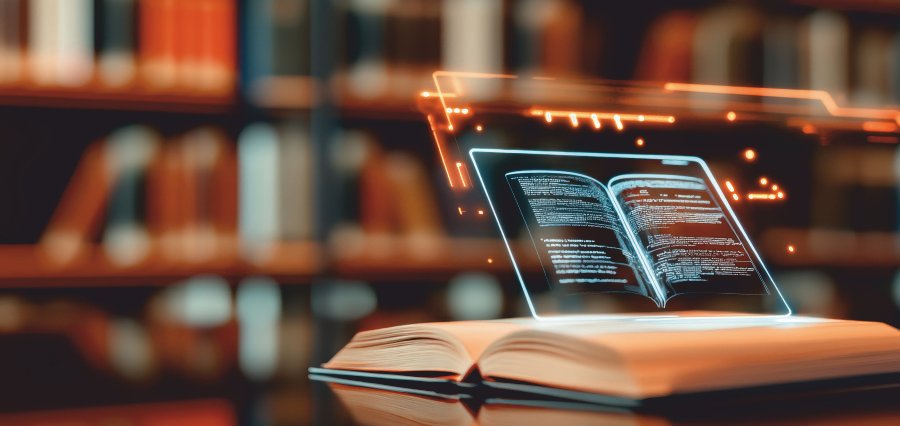“Let the WINDOW BE OPEN and let the LIGHT COME”
This is an anonymous saying whose variations are adopted by many a poets and prose writers in their works. ‘Light’ is a metaphor for knowledge and ‘the window’, for the mind. If we keep our mind (window) open, the knowledge is sure to creep in. Whoever puts in efforts, will acquire knowledge. Knowledge is nobody’s privilege, not even of books.
Having set the tone of the discussion, I may hasten to add that I myself am a voracious book reader. Reading a book certainly enhances one’s knowledge. The enhancement can be as big as showing up a new direction, a new way of thinking or fulfilling dreams, or understanding a new subject and can be as little as telling the reader that books by such and such author aren’t of ‘my type’, hence avoid. But, enhancements, it does give.
Gutenberg, the first printing press, was a technological marvel. It allowed the knowledge to proliferate at an unprecedented rate by way of printed books. The earliest reference to the ‘pre book era’ is found in India’s Vedic period where the Sanskrit scriptures were written on the ‘Bhoj patras’- a tree bark. On the flattened bark, the sacred mantras were written. Then, there are stone inscriptions, but they can’t be compared to relatively handy Bhoj patra books. See, the portability was in vogue even in those times also and a suitable technology was also available. Bhoj Patras were difficult to preserve for longer time periods and hence, several Rishis depended on the ‘Shruti’- memorising by listening only, but this is a side stepping.
Coming back to the main topic, do you remember the famous quote by Henry Ford, “Any customer can have a car painted any colour that he wants, so long as it is black.” Similarly, so long as the intention is to acquire knowledge, the choice of medium is irrelevant. Yes, the printed books have all the wisdom of the world stored between the two covers for ages. Earliest scientists, writers, philosophers and thinkers ‘published’ their work in the form of some type of printed material and we are benefitting from these collections immensely. ‘Published’ was a synonym for ‘printing’. But that is no more the case.
The difficulty in preserving these works, copying and distributing them in a given amount of time became a Herculean task and soon, the help of the technology was sought.
The first computers and even the mobiles had what is known as 5×7 matrix of dots which formed an alphabet when selectively some of them were highlighted. This was annoying to the eyes and very repulsive way of reading text on the screen or from a printout for any comfort. The printers were aptly named ‘Dot matrix printers. The technology of display and printing progressed fast and now we have totally strain free reading, on the screen or on the paper.
Once computers came into the mainstream for day-to-day use from their elite positions in the research laboratories, it was but natural that more people began reading from the screen. One thing led to another and the book reading Apps and Devices like Kindle and other tablets were born.
The large-sized mobile phones nailed the proliferation of tablets like devices also. It is said that the mobile killed the camera, calendar, calculator, navigation, TV, and other such appliances. It also on its way to dominate the book industry, purposefully avoiding the word ‘kill’ to soothe the feelings of the purists.
The advantages of reading E- books are too many to list. Apart from the convenience of holding several hundreds of them in our hands on a mobile, it also allows us to adjust the fonts, background colour, annotate and even find out the meaning of a word with an online dictionary. Online translation is the icing on the cake.
Take just one of the advantages. If someone writes an article, he/she will have all the references, resources available with him in the device itself and will not have to rush to libraries to search some.
Two recent technological developments have all the ingredients of changing the ‘reading’ scenario once again.
Let’s talk about the first. Which in my view, is almost there, but not quite? In my student days, whenever exams were round the corner, the thought of reading those voluminous books always scared me. I always dreamt of a technique where in keeping these books just below the pillow while sleeping will inductively transfer the book knowledge in my little brain! With Audio Books, the dream is a step nearer. With Audio Books, one can ‘read’ with eyes closed. Imagine the advantage of this. Like ‘hands free’ gadgets, this is ‘eyes free’ device. There is a choice of voices, male or female and also the pace. But why I said, ‘not quite?’ Ideally, the voice should be ours. When we read a novel, all the dialogues we read are actually spoken in our mind in our voice by us. This triggers thinking or imagining process. So, the technology should develop to allow our voice to be heard.
The second development is the cloud computing or cloud storage. Cloud storage has diminished the need of very high memory requirement. With the advent of 4G and now 5G, one can access virtually any material from anywhere in the world in seconds. Books in physical form can never compete with this.
And why we need books? To enhance knowledge? Then why not use ‘do it yourself’ type of virtual labs right from the school? Such stereoscopic 3D experiential learning systems are already available in the country.
Ending on a lighter note. Earlier, the photographs of lawyers, attorneys, politicians and philosophers without the volumes on the Encyclopaedia Britannica in the background was deemed incomplete. Now such photos look like a fossil. That’s the power of technology.
The author is Kashyap Mankad, Founding Member and Technical Director, Saras-3D, Inc
About the Author
Kashyap Mankad is a Founding Member and Technical Director at 3D EdTech (Saras-3D) a dynamic ed-tech start-up that aims to elevate and transform the learning experience for K12 students through 3D technology.
At Saras-3D, Kashyap oversees the overall operations and working of the various technical departments functioning in India office. He drives the end-to-end development of content for all the four subjects.
An electronics hobbyist turned electronics professional, Kashyap was previously Group Director – Electro Optical Systems Group, Space Applications Centre at ISRO, Ahmedabad where he developed electro optical payloads for the organization’s space program. He was also the Project Director for INSAT 3D/R/S and GISAT 1 & 2 Payloads and Committee Member on the Chandrayaan 2 mission, where he advised and evaluated various pre-launch calibration aspects of the payloads.
He has represented India as a member of the Expert Team on Satellite Systems (ET-SAT), at World Meteorological Organisation, United Nations, Geneva.
A firm believer in the concept of ‘pay it forward’ he provides voluntary services to the Space Exhibition attached to the Space Applications Centre on weekends where he regularly interacts with students and other visitors answering any queries they may have about the field.
Kashyap also serves as Technical Director at Neo Sense Vector Technology another start-up that seeks to Digitize, Disrupt and Democratize Healthcare and is a Resource Scientist at Vikram Sarabhai Space Exhibition, SAC, Ahmedabad.
He holds an M.E. (Electronics) from Dharmsinh Desai Institute of Technology, Nadiad and B.E. (Electronics) from Lalbhai Dalpatbhai College of Engineering, Ahmedabad.









